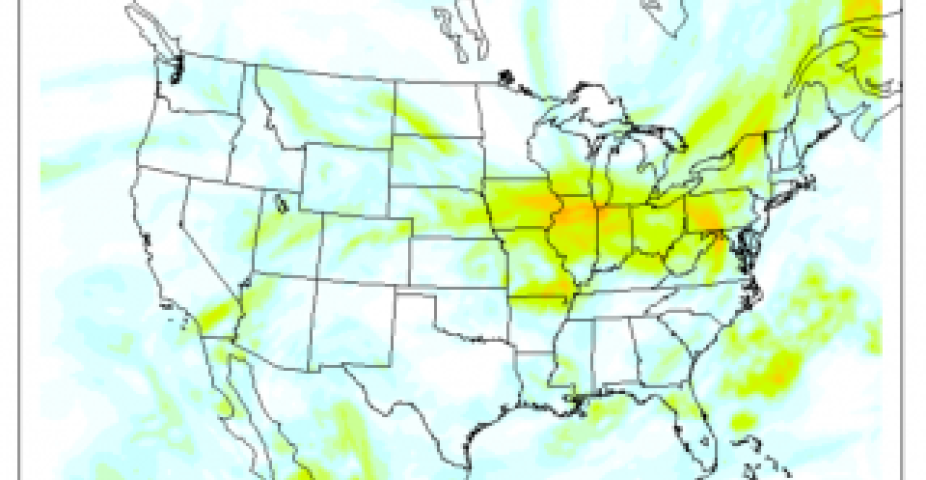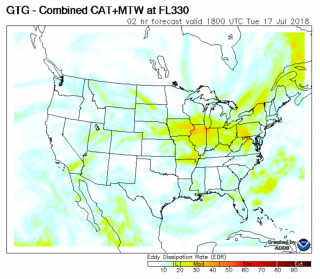Graphical Turbulence Product (GTG-3)

Over the last several years the FAA has funded NCAR and others to develop a turbulence nowcast and forecast system for application over the continental U.S. The forecast system, named GTG for "Graphical Turbulence Guidance," provides contours of turbulence potential based on NWP model forecasts out to 12 hours lead time. The GTG system is part of the NCEP operational suite. An example as it currently appears on ADDS is shown below.
The GTG procedure uses numerical weather prediction model forecasts to compute a number of turbulence diagnostics which are then weighted and combined. The relative weights for the combination are dynamically optimized for best agreement with the most recent available turbulence observations (in situ EDR data and pilot reports). This procedure allows the algorithm to minimize forecast errors due to uncertainties in individual diagnostic performance and thresholds. Rigorous statistical verification exercises have been performed in which probabilities of yes and no detections were determined by comparing turbulence forecasts to PIREPs and in situ EDR data. These statistics have made it possible to compare performance of the individual diagnostics, as well as test various diagnostic thresholding and weighting strategies. The overall forecast performance using the weighted diagnostics provides superior skill to the use of individual diagnostics.
The GTG is a constantly evolving product, with specific mountain wave turbulence, clear air turbulence and in the future also convectively–induced turbulence diagnostics (CIT) as well as probabilistic forecasts. Furthermore, a global GTG forecast product has been developed that has been shared with NCEP and the UKMet Office as part of the ICAO World Area Forecast System (WAFS) efforts to be operational in 2020.
Muñoz-Esparza, D. and R. Sharman, 2018: An Improved Algorithm for Low-Level Turbulence Forecasting. J. Appl. Meteor. Climatol., 57, 1249–1263, https://doi.org/10.1175/JAMC-D-17-0337.1
Sharman, R., and J. Pearson, 2017: Prediction of energy dissipation rates for aviation turbulence. Part I: Forecasting nonconvective turbulence. J. Appl. Meteor. Climatol., 56, 317–337, https://doi.org/10.1175/JAMC-D-16-0205.1.
Sharman, R., and T. Lane, 2016: Aviation Turbulence: Processes, Detection, Prediction. Springer, 523 pp.
Sharman, R., C. Tebaldi, G. Wiener, and J. Wolff, 2006: An integrated approach to mid- and upper-level turbulence forecasting. Wea. Forecasting, 21, 268–287, https://doi.org/10.1175/WAF924.1.
Contact
Please direct questions/comments about this page to:
Wiebke Deierling
Project Scientist II
